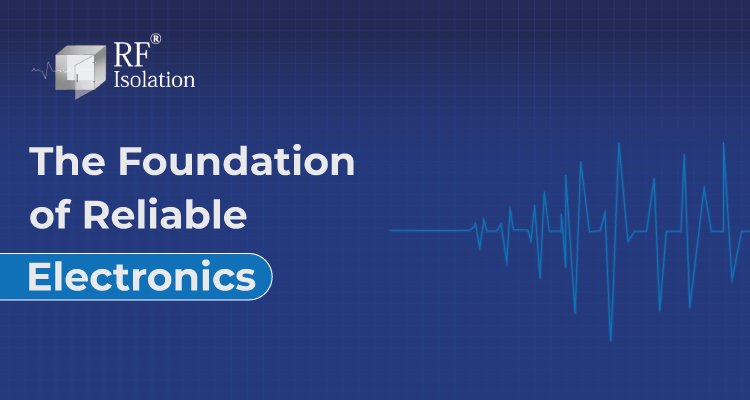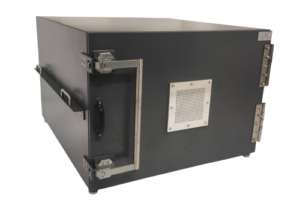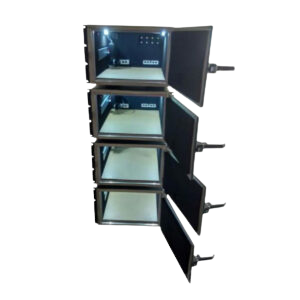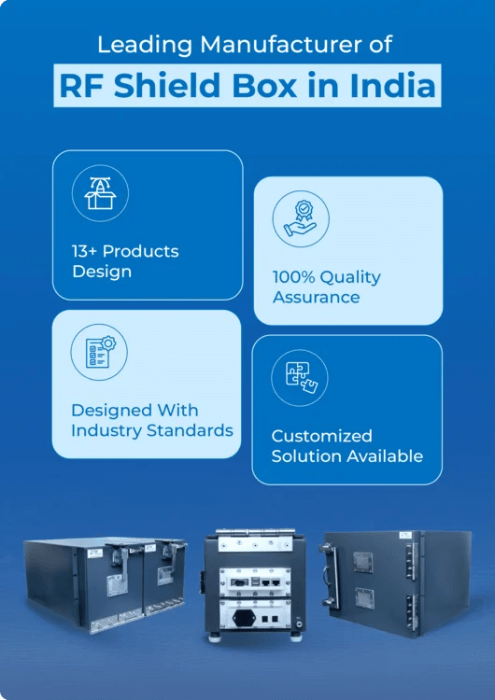
RF Isolation: The Foundation of Reliable Electronics
In the intricate world of electronics, where miniaturization and increasing complexity are the norm, the management of electromagnetic interference (EMI) has become paramount. Radio Frequency (RF) signals pose a significant threat to the performance and reliability of electronic systems.
Unmitigated RF interference can lead to data corruption, system instability, and even catastrophic failures. To ensure the robust operation of electronic devices, effective RF isolation is indispensable.
This blog explores the critical role of RF isolation box and chamber in safeguarding electronic systems.
What is RF Isolation?
Importance of RF Isolation for Electronic Devices
- Prevention of Interference: RF isolation helps to avoid unwanted interference between different components or systems within an electronic device. This is especially important in complex devices with multiple RF components, such as smartphones, where interference can degrade signal quality and lead to poor performance.
- Signal Integrity: Maintaining RF isolation ensures that signals remain clear and undistorted. In devices like radios or televisions, effective isolation is necessary to prevent crosstalk between different frequency bands, which could otherwise result in a loss of signal clarity and overall functionality.
- Enhanced Performance: Proper RF isolation contributes to the overall performance of electronic devices. For instance, in communication systems, it ensures that the transmitter’s signal does not bleed into the receiver path, which would otherwise compromise the quality of the received signal and affect communication reliability.
- Minimized Electromagnetic Interference (EMI): Devices with good RF isolation are less likely to emit unwanted electromagnetic interference that could affect other nearby electronics. This is particularly important in sensitive applications like medical devices, where external interference can lead to malfunctions or erroneous readings.
- Compliance with Regulations: Many electronic devices must meet regulatory standards for RF emissions and susceptibility. Effective RF isolation helps devices comply with these standards, avoiding legal issues and ensuring that they can be sold and used in different markets.
- Improved Device Longevity: By reducing the risk of interference and signal degradation, RF isolation helps in maintaining the longevity and reliability of electronic devices. This can lead to fewer malfunctions and a longer operational life.
What Affects the RF Shielding Effectiveness?
- Material Properties: The type of material used for shielding significantly impacts its effectiveness. Materials with high electrical conductivity, such as copper or aluminum, are better at blocking RF signals. Materials with magnetic properties, like ferrite, can also be effective, especially for lower frequencies.
- Shielding Thickness: Thicker shielding materials generally provide better isolation because they can block more of the RF signal. However, the thickness must be balanced with the weight and space constraints of the device.
- Frequency Range: The effectiveness of RF shielding can vary depending on the frequency of the RF signals. Higher frequencies often require more effective shielding due to their shorter wavelengths. Materials and designs that work well for lower frequencies might be less effective at higher frequencies. This post is sponsored by our partners.
- Shield Design and Construction: The design of the shield is crucial. Effective shielding involves not just using appropriate materials but also ensuring that the shield is properly constructed. This includes minimizing gaps, seams, and openings that could allow RF leakage. Proper grounding and continuity are also essential.
- Shield Coverage: Complete and continuous coverage is necessary for effective shielding. If there are gaps or breaks in the shield, RF signals can leak through and reduce the overall shielding effectiveness.
- Environmental Factors: External factors like temperature, humidity, and physical wear can affect the performance of RF shielding materials. For example, moisture can degrade some materials, leading to reduced shielding effectiveness.
- Shielding Quality and Installation: The quality of the shielding material and its installation are crucial. Poor-quality materials or improper installation can lead to reduced effectiveness. Ensuring a good fit and proper connections is essential for optimal performance.
- Electromagnetic Compatibility (EMC) Design: Good EMC design practices, including the use of filters, grounding, and proper layout, complement RF shielding and contribute to overall effectiveness in managing RF interference.
Our Products Range
1. RF Shield Box
An RF isolation box is a protective enclosure designed to block external RF signals from entering or escaping. It is used to create a controlled environment where electronic devices or components can be tested without interference from outside RF sources. These RF isolation boxes are commonly used in laboratories and for sensitive equipment that requires shielding from electromagnetic interference (EMI).
2. RF Chamber
An RF isolation chamber, also known as an anechoic chamber or RF isolation test chamber, is a specialized room designed to completely absorb RF signals and prevent reflections. This controlled environment is used for testing and measuring the performance of RF devices, antennas, and communication systems. RF isolation chambers are lined with absorbent materials to eliminate echoes and external interference, providing accurate measurement results.3. RF Test Rack
An RF isolation test rack is a setup or framework used to mount and organize RF testing equipment. It provides a structured and accessible way to configure and connect various test instruments, such as signal generators, analyzers, and network analyzers. RF isolation test racks are used in laboratories to facilitate the testing and evaluation of RF devices and systems, ensuring that equipment is properly arranged for efficient testing.4. RF Shielded Door
An RF shielded door is a specialized door designed to provide high levels of RF shielding while allowing access to shielded rooms or enclosures. These doors are used with shielded rooms orc chambers to ensure the shielding integrity is maintained. They are equipped with conductive gaskets and seals to prevent RF leakage around the edges, ensuring that the environment inside remains free from external RF interference.Conclusion
And that’s how RF isolation is the foundation of reliable electronic devices. Our RF products are designed to deliver superior performance in preventing unwanted RF interference, ensuring the integrity and reliability of your electronic systems. Whether you need a controlled environment for precise rf isolation testing, a robust enclosure for sensitive equipment, or high-quality shielding solutions, our products offer unparalleled protection and compliance with industry standards.





